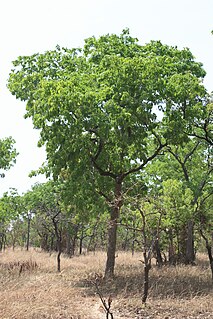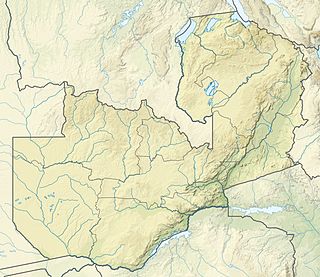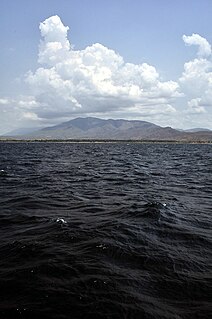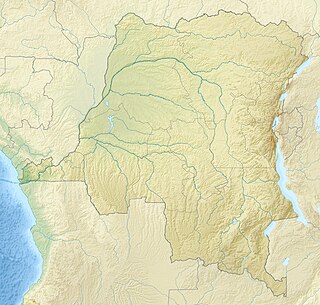 W
WThe Miombo woodland is a tropical and subtropical grasslands, savannas, and shrublands biome. It includes four woodland savanna ecoregions characterized by the dominant presence of Brachystegia and Julbernardia species of trees, and has a range of climates ranging from humid to semi-arid, and tropical to subtropical or even temperate. The trees characteristically shed their leaves for a short period in the dry season to reduce water loss, and produce a flush of new leaves just before the onset of the rainy season with rich gold and red colours masking the underlying chlorophyll, reminiscent of temperate autumn colours in the temperate zone.
 W
WAngolan miombo woodlands cover most of central Angola and extend into the Democratic Republic of Congo. They are part of the larger miombo ecosystem that covers much of eastern and southern Africa.
 W
WThe densely forested Central Zambezian miombo woodlands that cut across southern central Africa are one of the largest ecoregions on the continent and home to a great variety of wildlife, including many large mammals.
 W
WThe Eastern miombo woodlands (AT0706) are an ecoregion of grassland and woodland in northern Mozambique, southern Tanzania, and southeastern Malawi.
 W
WBrachystegia is a genus of tree of the sub-family Caesalpinioideae that is native to tropical Africa.
 W
WBrachystegia boehmii, named after the 19th-century German naturalist and collector Richard Böhm, is a flat-topped tree with spreading crown, native to eastern and southern Africa. It forms an important component of miombo woodland, and occurs in Angola, Botswana, Democratic Republic of the Congo, Malawi, Mozambique, Zimbabwe, and Zambia. Common names are Machabel (Mashonaland), Mufuti (Zimbabwe) and Prince of Wales feathers.
 W
WBrachystegia laurentii, a legume in the family Fabaceae, is a species of large tree found in western Cameroon, Gabon, Equatorial Guinea, the Democratic Republic of the Congo and the Republic of the Congo. It has a dense, umbrella-shaped crown. The wood is known as bomanga and has many uses in building and construction.
 W
WGombe National Park, also known as Gombe Stream National Park, is located in western Kigoma Region, Tanzania, 10 miles (16 km) north of Kigoma, the capital of Kigoma Region. Established in 1968, Gombe is one of the smallest national parks in Tanzania, with only 13.5 square miles (35 km2) of protected land along the hills of the eastern shore of Lake Tanganyika. The terrain is distinguished by steep valleys, and the forest vegetation ranges from grassland to woodland to tropical rainforest. Accessible only by boat, the park is most famous as the location where Jane Goodall pioneered her behavioral research conducted on the chimpanzee populations. The Kasekala chimpanzee community, featured in several books and documentaries, lives in Gombe National Park.
 W
WIsoberlinia is a genus in the family Fabaceae of five species of tree native to the hotter parts of tropical Africa. They are an important component of miombo woodlands. The leaves have three or four pairs of large leaflets and stout seed pods.
 W
WIsoberlinia doka is a hardwood tree native to African tropical savannas and Guinean forest-savanna mosaic dry forests where it can form single species stands. The tree is exploited for its economic value as a commercial timber. The leaves and shoots of the tree dominate the diet of the Giant Eland in its range. The tree is a host plant for Anaphe moloneyi, one of the caterpillars that produces a wild silk, sayan, local to parts of Nigeria.
 W
WJulbernardia globiflora is a tropical African tree widespread at moderate altitudes in Miombo woodland to the south and east of the equatorial forest region of the Congo basin. Its common name is Mnondo. It is ecologically important over wide areas and is dominant to co-dominant in many types of woodland, always being most successful in drier types of deciduous woodland where there is less competition.
 W
WKafue National Park is the largest national park in Zambia, covering an area of about 22,400 km². It is the second largest park in Africa and is home to over 55 different species of mammals.
 W
WKasanka National Park is a park located in the Serenje District of Zambia’s Central Province. At roughly 390 km2 (150 sq mi), Kasanka is one of Zambia’s smallest national parks. Kasanka was the first of Zambia’s national parks to be managed by a private-public partnership. The privately funded Kasanka Trust Ltd has been in operation since 1986 and undertakes all management responsibilities, in partnership with the Department of National Parks and Wildlife. The park has an average elevation between 1,160 m (3,810 ft) and 1,290 m (4,230 ft) above mean sea level. It has a number permanent shallow lakes and water bodies with the largest being Wasa. There are five perennial rivers in the park, with the largest being the Luwombwa River. The Luwombwa is the only river that drains the NP, which flows out in the northwestern corner. It is a tributary of the Luapula, which further upstream also drains the Bangweulu Swamp and forms the main source of the Congo River. Although Kasanka NP is part of the Greater Bangweulu Ecosystem, there is no direct hydrological connection between the park and the Bangweulu Wetlands.
 W
WKasungu National Park is a national park in Malawi. It is located west of Kasungu, about 175 km north of Lilongwe, extending along the Zambian border.
 W
WKatavi National Park is a Tanzanian national park created in 1974 and is located in Katavi Region, Tanzania. It is a very remote park that is less frequently visited than other Tanzanian national parks. The park is approximately 4,471 square kilometers (1,726 sq mi) in area, which makes it the third largest national park in Tanzania. The park encompasses the Katuma River and the seasonal Lake Katavi and Lake Chada floodplains.
 W
WBangweulu — 'where the water sky meets the sky' — is one of the world's great wetland systems, comprising Lake Bangweulu, the Bangweulu Swamps and the Bangweulu Flats or floodplain. Situated in the upper Congo River basin in Zambia, the Bangweulu system covers an almost completely flat area roughly the size of Connecticut or East Anglia, at an elevation of 1,140 m straddling Zambia's Luapula Province and Northern Province. It is crucial to the economy and biodiversity of northern Zambia, and to the birdlife of a much larger region, and faces environmental stress and conservation issues.
 W
WThe Luapula River is a section of Africa's second-longest river, the Congo. It is a transnational river forming for nearly all its length part of the border between Zambia and the DR Congo. It joins Lake Bangweulu to Lake Mweru and gives its name to the Luapula Province of Zambia.
 W
WThe Luvua River is a river in the Katanga Province of the Democratic Republic of the Congo (DRC). It flows from the northern end of Lake Mweru on the Zambia-Congo border in a northwesterly direction for 350 kilometres (220 mi) to its confluence with the Lualaba River opposite the town of Ankoro. The Lualaba becomes the Congo River below the Boyoma Falls.
 W
WMahale Mountains National Park lies on the shores of Lake Tanganyika in Kigoma Region, Tanzania. Named after the Mahale Mountains range that is within its borders, the park has several unusual characteristics. First, it is one of only two protected areas for chimpanzees in the country. The chimpanzee population in Mahale Mountains National Park is the largest known and due to its size and remoteness, the chimpanzees flourish. It also the only place where chimpanzees and lions co-exist. Another unusual feature of the park is that it is one of the very few in Africa that must be experienced by foot. There are no roads or other infrastructure within the park boundaries, and the only way in and out of the park is via boat on the lake.
 W
WThe Marungu highlands are in the Katanga Province of the Democratic Republic of the Congo, to the west of the southern half of Lake Tanganyika.
 W
WLake Mweru is a freshwater lake on the longest arm of Africa's second-longest river, the Congo. Located on the border between Zambia and Democratic Republic of the Congo, it makes up 110 kilometres (68 mi) of the total length of the Congo, lying between its Luapula River (upstream) and Luvua River (downstream) segments.
 W
WNyika National Park is Malawi’s largest national park, with an area of 3200 km2.
 W
WParinari excelsa, the Guinea plum, is a species of large, evergreen tree in the family Chrysobalanaceae. It has a very wide distribution in tropical Africa and South America. This species grows to 50 m (160 ft) tall while the trunk is up to 1.5 m (5 ft) in diameter.
 W
WRubondo Island National Park is one of two Tanzanian National Parks located on an island in Lake Victoria. The island attracts a small number of visitors each year, mainly game fishermen and bird enthusiasts.
 W
WSouth Luangwa National Park in eastern Zambia, the southernmost of three national parks in the valley of the Luangwa River. It, is a world-renowned wildlife haven. It is simply know to locals simply as "the South Park." Concentrations of game along the meandering Luangwa River and its lagoons are amongst the most intense in Africa. The river teems with hippo and crocodile and provides a lifeline for one of the greatest diversities of habitat and wildlife, supporting more than 60 species of mammals and over 400 species of birds.It marks the end of the Great Rift Valley.
 W
WUpemba National Park is a large national park in Haut-Lomami, Lualaba Province & Haut-Katanga Province of the southeastern Democratic Republic of Congo, formerly Zaire.